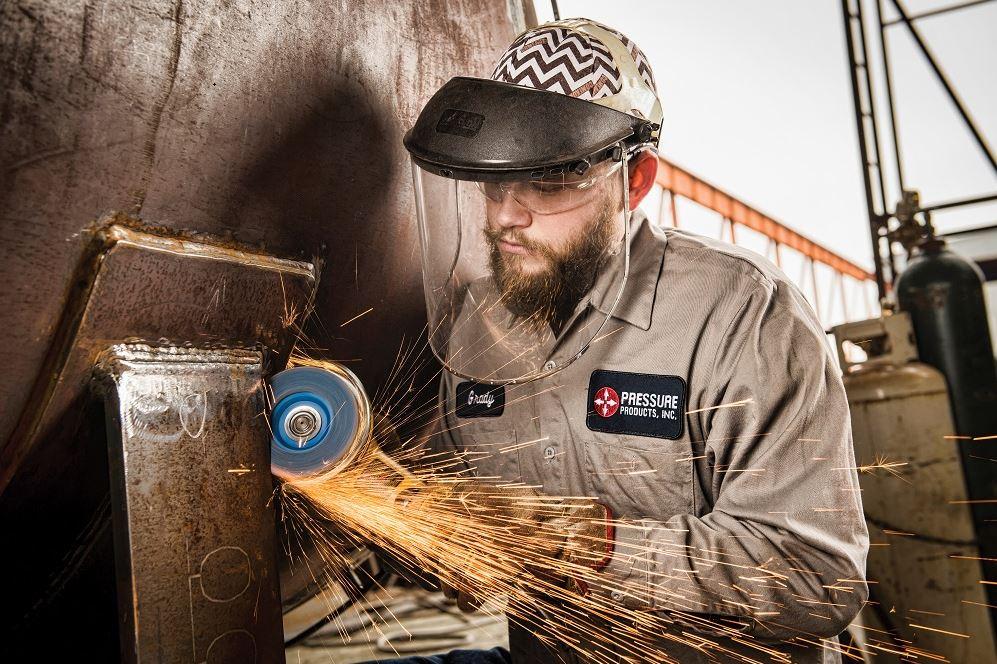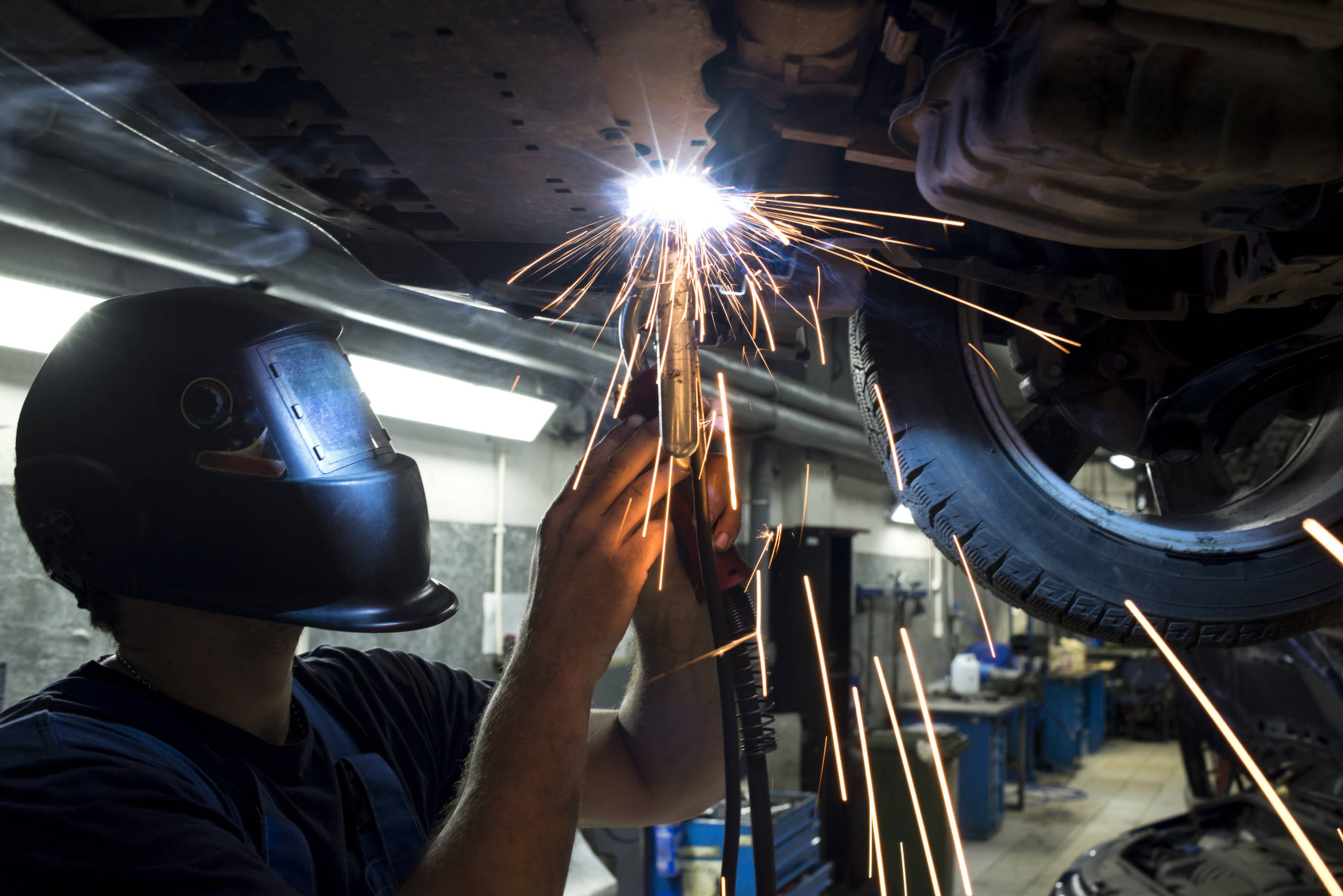Typical Welding Fixing Issues and Just How to Address Them Effectively
Welding repairs commonly come across a series of issues that can jeopardize the honesty of the last product. Common issues include poor infiltration, porosity, and misalignment, to name a few. Each defect provides one-of-a-kind difficulties that need specific methods for resolution. Understanding these problems is vital for welders aiming to improve their results and abilities. This conversation will certainly explore these usual welding fixing issues and effective techniques to resolve them.
Insufficient Infiltration
Poor penetration occurs when the weld steel fails to totally fuse with the base material, leading to weak joints and possible architectural failings. This problem usually comes from insufficient warmth input, inaccurate electrode angle, or improper welding rate. Welders may run into insufficient penetration due to a miscalculation of the necessary specifications for a particular material thickness or type. Additionally, contamination on the base product's surface area can prevent effective bonding, exacerbating the problem. To attend to inadequate infiltration, welders must assure ideal setups on their equipment and preserve a tidy job surface. Regular inspection of welds is recommended to identify any type of shortages early, enabling timely corrections and the prevention of compromised structural honesty in bonded settings up.
Porosity
Porosity is an usual issue in bonded joints that shows up as little gas bubbles entraped within the weld steel. This problem can endanger the honesty of the weld, resulting in lowered toughness and possible failing under stress. Fabrication. Porosity commonly emerges from contamination, dampness, or improper welding methods, which permit gases to escape right into the liquified weld pool. To address porosity, welders must ensure proper surface prep work, maintain a clean workplace, and make use of suitable welding parameters. In addition, selecting the best filler material and securing gas can mitigate gas entrapment. Normal assessment and testing of welds can assist recognize porosity early, guaranteeing prompt corrective actions are taken, thereby preserving the top quality and dependability of the welded structure
Misalignment
Imbalance in welding can occur from numerous elements, including inappropriate arrangement and thermal growth. Understanding the origin triggers is vital for reliable resolution. Numerous adjustment techniques are offered to realign parts and assure structural honesty.
Reasons for Imbalance
Welding imbalance often stems from a range of underlying issues that can endanger architectural honesty. One main reason is improper fit-up of parts prior to welding, which can cause gaps and uneven surfaces. Variations in thermal growth during the welding process can likewise lead to distortion, specifically if the materials being joined have various coefficients of growth. Furthermore, insufficient clamping and fixturing may stop working to hold components securely in position, causing movement throughout welding. Badly maintained tools, including welding equipments and devices, might present incongruities in the weld bead, additional adding to imbalance. Lastly, operator error, coming from inadequate training or experience, can likewise play a substantial role in developing misaligned welds.
Improvement Methods Readily Available
Addressing misalignment effectively needs a combination of restorative methods tailored to the specific issues handy. One typical approach is using jigs or fixtures to hold parts in the proper setting throughout welding, guaranteeing regular positioning. Additionally, preheating the materials can aid decrease distortion and boost fit-up. For substantial imbalance, mechanical realignment techniques, such as utilizing hydraulic jacks or clamps, can be used to fix the position before welding. Post-weld heat treatment may additionally be required to soothe stress and anxieties brought on by misalignment. Mindful examination and adjustment during the setup stage can prevent misalignment issues from coming to be significant problems, advertising a smoother welding process and enhancing overall structural stability.
Distortion
Distortion is a common challenge in welding that can arise from numerous elements, including unequal cooling and heating. Understanding the reasons of distortion is essential for executing efficient prevention techniques. Resolving this issue not just boosts architectural honesty but also enhances the general high quality of the weld.
Sources of Distortion
When subjected to the extreme warm of welding, products frequently undergo changes that can cause distortion. This sensation largely develops from thermal expansion and contraction throughout the welding process. As the weld area warms up, the material increases; upon cooling, it contracts, which can develop internal tensions. Additionally, uneven heating throughout a workpiece can aggravate these stress and anxieties, causing bending or flexing. The kind of material likewise plays a significant role; steels with differing thermal conductivity and coefficients of development may respond in a different way, resulting in unforeseeable distortions. Inadequate joint layout and inadequate fixturing can contribute to misalignment throughout welding, that site enhancing the chance of distortion. Recognizing these causes is crucial for reliable welding fixing and prevention techniques.
Avoidance Techniques
Efficient prevention techniques for distortion throughout welding emphasis on controlling heat input and ensuring appropriate joint layout. Keeping a constant heat input helps to decrease thermal growth and contraction, which can lead to distortion. Making use of techniques such as pre-heating the workpiece can likewise minimize the temperature level slope, advertising uniform heating. Additionally, selecting proper joint designs, such as T-joints or lap joints, can enhance security and lower anxiety concentrations. Implementing appropriate fixturing to safeguard the workpieces in position better help in preserving alignment throughout the welding procedure. Lastly, staggered welding series can disperse heat much more evenly, protecting against localized distortion. By using these strategies, welders can significantly lower the possibility of distortion and enhance the overall quality of their welds.
Fracturing
Fracturing is a common concern encountered in welding repair services, typically resulting from different factors such as incorrect air conditioning prices, material selection, or inadequate joint prep work. The occurrence of splits can substantially jeopardize the stability of the weld, bring about prospective failures throughout operation. To resolve this concern, welders must initially analyze the origin triggers, guaranteeing that products work and properly picked for the certain application. Additionally, managing the air conditioning rate during the welding procedure is crucial; quick air conditioning can cause anxiety and result in fracturing. Appropriate joint design and prep work also add to decreasing the risk. Executing these methods can enhance weld top quality and durability, eventually lowering the probability of fracturing in finished weldments.

Insufficient Blend
A significant concern in welding fixings is insufficient fusion, which happens when the weld steel does not sufficiently bond with the base material or previous weld passes - Belgrade. This issue can lead to weak points in the joint, potentially endangering the honesty of the bonded framework. Aspects adding to insufficient combination consist of not enough heat input, incorrect welding strategy, and contamination of the surface areas being joined. To resolve this problem successfully, welders should assure correct pre-weld cleaning and surface preparation, as well as adjust their welding criteria to attain appropriate penetration and combination. Regular inspection throughout the welding process can also help identify incomplete blend early, enabling prompt restorative measures to boost the total top quality of the weld
Overheating
While welding repair services can enhance structural stability, overheating presents a considerable difficulty that can bring about material degradation. Excessive heat during welding can change the mechanical buildings of metals, causing reduced toughness, enhanced brittleness, and warping. This sensation is especially critical in high-stress applications where structural reliability is critical. Identifying getting too hot can involve aesthetic assessments for discoloration or distortion, as well as keeping an eye on temperature level during wood welding the welding procedure. To reduce the threats linked with getting too hot, welders should utilize appropriate techniques, such as controlling warmth input, readjusting traveling speed, and using ideal filler materials. In addition, implementing pre- and post-weld heat treatments can aid restore material residential properties and enhance the overall top quality of the repair work, making sure lasting performance and safety and security.
Often Asked Questions
What Are the Typical Signs of a Welding Issue?

How Can I Examine My Welds for Quality?
To check welds for quality, one can utilize visual evaluations, ultrasonic testing, and radiographic methods. Each strategy assures structural stability, determines flaws, and verifies adherence to specified standards, ultimately enhancing the reliability of the welded joints.
What Safety and security Precautions Should I Take While Welding?
When welding, one must focus on security by wearing suitable individual protective tools, making certain appropriate ventilation, safeguarding combustible materials away, maintaining a tidy workspace, and recognizing surroundings to stop injuries and accidents.
Can I Fix a Weld Without Remodeling the Entire Joint?
Repairing a weld without redesigning the entire joint is feasible, relying on the damages (Montana Mobile Welding and Repair Belgrade). Strategies such as grinding, adding filler product, or using a welding procedure can effectively resolve particular problems while preserving the bordering framework
What Equipment Are Important for Efficient Welding Services?
Necessary aluminum welding near me tools for efficient welding repairs include a welding equipment, wire brush, mill, safety gear, clamps, and filler materials. Each tool plays a vital role in making certain high quality and security throughout the repair work process. Porosity generally occurs from contamination, wetness, or inappropriate welding strategies, which enable gases to leave into the molten weld pool. Badly kept devices, including welding devices and tools, may introduce variances in the weld bead, additional contributing to misalignment. When subjected to the intense warm of welding, products often go through modifications that can lead to distortion. Cracking is a typical problem come across in welding repairs, typically resulting from various variables such as inappropriate cooling prices, product option, or insufficient joint preparation. A considerable problem in welding repair services is incomplete blend, which takes place when the weld steel does not properly bond with the base product or previous weld passes.